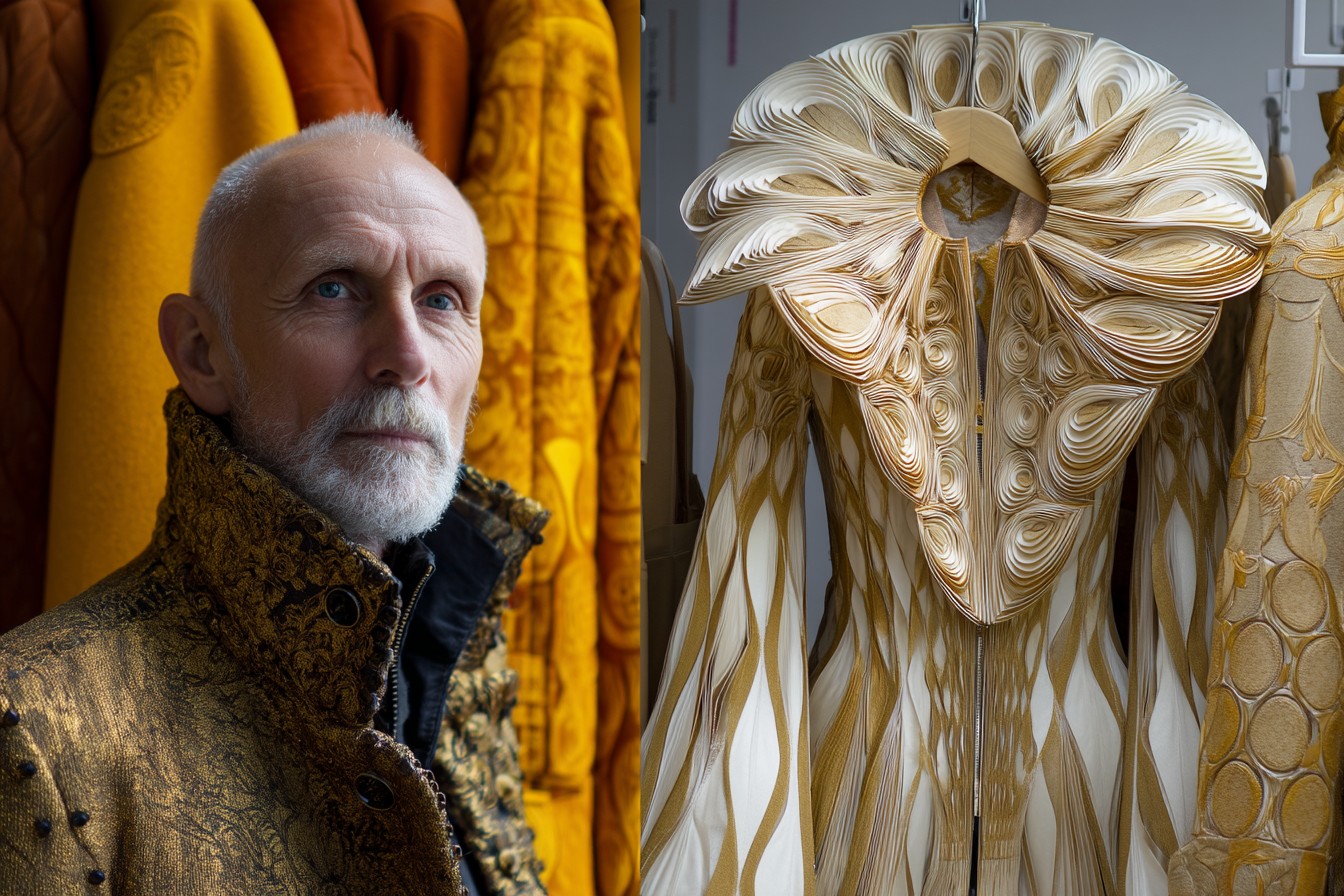There’s a silent code among fashion editors. We’ll happily write thousand-word odes to the perfect white t-shirt that costs more than a weekend away. We’ll analyze the cultural significance of a particular Prada shoe with the gravity usually reserved for climate treaties. We’ll debate the merits of different cashmere grades like they’re matters of national security. But mention Primark in certain fashion circles and watch the room temperature drop faster than a sample sale on opening morning.

Which is absolute bollocks, if I’m being honest. Because the truth—the dirty little secret of the fashion industry—is that even the most designer-clad, luxury-soaked fashion editors often have a bit of Primark tucked away in their wardrobes. They just don’t talk about it. Well, not in public anyway.
I discovered this about five years ago at a major magazine’s Christmas party. I complimented the fashion director—a woman typically dressed head-to-toe in COS at minimum, The Row at maximum—on her classic black turtleneck. Cashmere? Italian? Some small-batch ethical producer perhaps? “Primark,” she whispered after checking no one was in earshot. “Six quid. I buy five every autumn and chuck them when they stretch.” She looked around nervously, as though Martin Margiela himself might leap out from behind a potted plant to revoke her fashion credentials.
Since then, I’ve made it a personal mission to get fashion industry people to confess their Primark purchases. Not to embarrass them, but because I find it genuinely fascinating what items these extremely style-conscious professionals—people with access to discounts, samples, and a comprehensive knowledge of every garment on the market—choose to buy from a store more known for £1 flip flops than fashion credibility.

The results have been illuminating, occasionally surprising, and weirdly consistent across different sectors of the industry. So here, compiled from years of conversations, slightly drunken confessions, and the occasional unguarded Instagram Story that was definitely deleted by morning, is what fashion editors actually buy from Primark.
At the top of nearly everyone’s list: socks. Not the fun, patterned ones or the sporty ones, but the basic, invisible trainer socks and plain black business socks that fashion somehow forgets about despite them being essential to, you know, actually wearing the shoes we obsess over. “I refuse to spend more than £1.50 on something that’s going to end up smelling like a biology experiment gone wrong and disappear in the laundry anyway,” admitted a menswear editor for a major newspaper. His designer suits hide socks that cost less than his morning coffee, and he’s absolutely fine with that.
Next up, and mentioned with surprising frequency: white t-shirts, but specifically for what industry people call “high-risk wearing situations.” These include festivals, beach holidays, paint-adjacent activities, and anywhere that involves small children with perpetually sticky hands. “I’ve got white tees from everywhere between Fruit of the Loom and Loro Piana,” a stylist for a luxury men’s magazine told me, “But for Glastonbury? Primark, every time. Three for a tenner, wear them, trash them, repeat next year.” It’s a pragmatic approach that makes complete sense when you think about it—why subject the £45 Sunspel to certain destruction when the £3.50 Primark can take the hit?

Loungewear is another surprisingly common Primark purchase among fashion professionals. Those jersey shorts and oversized t-shirts that never leave the house but form the backbone of Netflix marathons and Sunday morning pancake-making sessions? Often Primark. “I literally style celebrities for red carpet events,” one London-based menswear consultant told me. “But my home-alone outfit? Primark jersey shorts I’ve had for five years. They’ve outlasted relationships, flats, and many allegedly superior garments.” The logic is consistent: why spend on clothes that only your cat will see?
There’s also a seasonal aspect to industry insiders’ Primark habits. Summer brings a whole category of what one magazine fashion director calls “disposable summer”—those items so specific to holidays and warm-weather activities that investing seems pointless for the UK’s two-week summer. Linen shirts that will be subjected to sunscreen, sweat, and sand. Beach cover-ups. Basic swimwear for pool lounging (as opposed to the “being seen” swimwear for beach clubs and Instagram). Even sunglasses make the list—”I lose a minimum of three pairs per summer,” a prominent stylist admitted. “The Primark ones are actually decent UV-wise, and I don’t have a breakdown when I leave them in a taxi.”
The most surprising category to me was what several editors independently called “trend testers”—inexpensive versions of runway trends they’re curious about but not ready to invest in. “If I’m not sure a particular trend will work for me or last beyond a season, I’ll often try the Primark version first,” explained a former colleague who now works for a luxury fashion platform. “I tested the oversized shirt trend there, liked how it looked, then invested in a proper one from COS. But the padded headband experiment started and ended at Primark, thank god.” It’s actually a remarkably sensible approach to trend adoption—use the high street as a fitting room for concepts before committing proper money.

Gym wear appears with surprising regularity too, particularly for what one editor called “low-performance exercise”—by which she meant yoga classes where fashion isn’t the focus, or solo runs where no one will see you. “Their workout leggings are honestly decent,” insisted a health and beauty editor who normally wouldn’t be caught dead in anything less than lululemon for her public Pilates classes. “For home workouts or just running errands? They do the job, and I don’t cry if I catch them on something.”
Men in the industry seem particularly drawn to Primark’s plain sweatshirts and hoodies. “They’re not trying to be anything they’re not,” a menswear buyer for a major department store told me. “No fake vintage washes, no over-designed details, just simple cotton basics that look better than they should for the price.” He specifically rates their seamless plain hoodies in gray marl or navy, which he wears for dog walks and working from home. At £10, he considers them “basically disposable warmth” rather than fashion items, which somehow makes them immune to his otherwise exacting standards.
Several industry people mentioned Primark’s men’s basic t-shirts as being surprisingly good for the price. Not the printed ones or anything with design aspirations, but the plain crew necks in black, white, or navy. “The cotton is decent weight, they wash well enough, and the fit is actually quite good if you size down,” a styling assistant at a major men’s magazine told me. “For layering under everything from jackets to knits, they’re perfect—no one sees them anyway.” At around £2.50 each, he buys them in bulk at the start of each season.

Perhaps the most unexpected Primark devotee I encountered was a creative director known for his uncompromising approach to quality and detail. His Primark obsession? Their basic crew neck long-sleeved t-shirts in navy. “Fifteen years I’ve been buying these,” he told me with unexpected passion. “Same cut, same material, £6. I’ve tried versions from everywhere—literally up to about £200—and for some reason, the Primark ones just sit right on me.” He buys five each October and wears them constantly through winter, under everything from casual Engineered Garments to formal Thom Sweeney tailoring. “It’s my one fashion contradiction, and I’m fine with it,” he shrugged.
What about accessories? Black tights appeared frequently in conversations with women in the industry, particularly the slightly thicker 80-100 denier ones for winter. “I’ve tried them all,” sighed a fashion features director who regularly includes £400 cashmere socks in her magazine’s Christmas gift guides. “And honestly? The Primark ones often outlast the expensive ones, possibly because I don’t feel precious about them.” At around £3.50 for three pairs, they’re seen as semi-disposable essentials rather than fashion items.
For men, plain canvas belts and basic leather belts for everyday wear get surprising endorsement. “For a simple black leather belt to hold up jeans? Primark,” admitted a men’s fashion editor who normally wears a handmade Italian leather belt with his work attire. “Eight quid, looks completely fine, does the job.” The logic is consistent—why spend on items that serve a purely utilitarian function and aren’t a focal point of an outfit?

There are definitely categories industry people avoid, however. Almost everyone I spoke to steers clear of Primark’s tailoring and outerwear, where construction values and materials make a more noticeable difference to appearance and longevity. Shoes were another universal no-go, with concerns about comfort and durability trumping price advantages. “Some things are worth investing in,” a stylist told me firmly. “Anything that keeps you off the ground—shoes, mattresses, tires—shouldn’t come from Primark.”
Denim receives mixed opinions. Some avoid Primark jeans entirely, citing poor cuts and rapid deterioration. Others see them as perfect for specific circumstances—festival beaters, paint-job trousers, or what one editor called “anxiety-free whites” (white jeans you can actually relax in because spillage doesn’t mean financial loss).
The psychology behind these shopping habits is fascinating. These are people who can identify fabric content by touch, who understand construction methods intimately, who regularly handle garments worth thousands. Yet they make deliberate, strategic choices to incorporate basics from the most budget-friendly retailer on the high street. It’s not about money—most could afford to shop exclusively at mid-range prices or above. It’s about pragmatism, about understanding that certain garments are functional rather than emotional investments.
There’s something refreshingly honest about this approach. Fashion often promotes the idea that quality matters at every level—that the humble t-shirt deserves the same investment as a tailored jacket. But these industry insiders seem to have developed a more nuanced view: some things truly are worth spending on, while others are perfectly adequate in their most basic form.
I’ve spotted this dual approach in my own wardrobe too. My suits come from proper tailors, my shoes from Northamptonshire makers, my outerwear from specialists. But open my workout drawer and you’ll find a stack of Primark’s £2.50 athletic socks. Check my holiday suitcase and you’ll discover their linen overshirts tucked alongside much pricier items. It’s not fashion hypocrisy—it’s wardrobe pragmatism.
Perhaps the most telling insight came from a fashion director who’s worked for two of the biggest luxury magazines in the country. “Fashion isn’t about where everything comes from,” she told me. “It’s about knowing what deserves investment and what doesn’t. Anyone who tells you otherwise is trying to sell you something.” She was wearing Prada shoes and a Primark cardigan at the time, and looking absolutely fantastic in both.
So next time you spot someone who looks suspiciously like they might work in fashion filling a basket with plain black socks or basic white tees in Primark, you’re probably right. Just don’t tell anyone I told you—I’ve still got to work with these people. Though given how many of them have confessed their Primark habits to me, perhaps the industry’s best-kept secret isn’t such a secret after all.

Leave a Reply